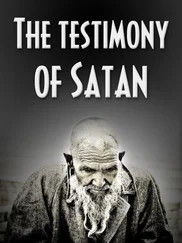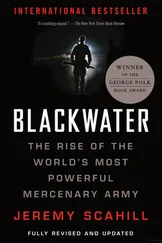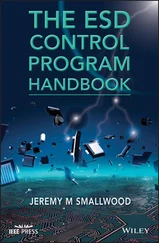AS JSOC AND ETHIOPIAN FORCES intensified their hunt for the leaders of the Islamic Courts Union in Somalia in January 2007, Fazul Abdullah Mohammed left his family near the Kenyan border and disappeared. Eventually, he made his way back to Mogadishu to reunite with the al Shabab fighters he had helped to train and finance. Fazul had already become al Qaeda’s most seasoned operative in the Horn of Africa, with several spectacular attacks under his belt, including the 1998 embassy bombings. He was about to take on a major role in a play al Qaeda had been producing since the early 1990s. The group had finally drawn the United States back into an asymmetric war in the heart of East Africa.
With the Somali ICU leaders on the run, al Qaeda saw Somalia as an ideal front line for jihad and began increasing its support for al Shabab. In early January 2007, bin Laden’s deputy, Ayman al Zawahiri, addressed the situation in Somalia in a recording released online. “I speak to you today as the crusader invader forces of Ethiopia violate the soil of the beloved Muslim Somalia,” he began. “I call upon the Muslim nation in Somalia to remain in the new battlefield that is one of the crusader battlefields that are being launched by America and its allies and the United Nations against Islam and Muslims.” He implored the mujahedeen, “Launch ambushes, land mines, raids and suicidal combats until you consume them as the lions eat their prey.”
In the disintegration of the ICU, al Qaeda had found its way into Somalia. “With the help of all these foreign fighters, the Shabab took over the fighting, with al Qaeda leadership,” recalled Indha Adde, who had been the ICU defense minister. “The Shabab started ordering executions and innocent Muslims were killed. They even targeted members of [the ICU]. I was commander for all [ICU] military operations, and I turned against the Shabab, after seeing these violations against Islam.” Indha Adde eventually went underground, along with Hassan Dahir Aweys, and began receiving support from Ethiopia’s grand enemy, Eritrea. Both men would hover around the militant Islamist movement as they waited to see which way the chips would fall. Eventually, the two would go in very different directions.
By early February 2007, the Ethiopian invasion had become an occupation, which was giving rise to widening unrest. In a nation that had already suffered one of the worst fates in recent history, Somali civilians were paying yet another horrifying price. The occupation was marked by indiscriminate brutality against Somali civilians. Ethiopian and US-backed Somali government soldiers secured Mogadishu’s neighborhoods by force, raiding houses in search of ICU loyalists, looting civilian property, and beating or shooting anyone suspected of collaboration with antigovernment forces. They positioned snipers on the roofs of buildings and would reportedly respond to any attack with disproportionate fire, shelling densely populated areas and several hospitals, according to Human Rights Watch. Extrajudicial killings by Ethiopian soldiers were widely reported, particularly during the final months of 2007. Accounts of Ethiopian soldiers “slaughtering” men, women and children “like goats”—slitting their throats—were widespread, Amnesty International noted. Both Somali Transitional Government forces, led by exiles and backed by the United States, and Ethiopian forces were accused of horrific sexual violence. Although forces linked to al Shabab were also accused of war crimes, a large proportion of those reported to Amnesty International, which included looting, rape and extrajudicial killings, were committed by Somali government and Ethiopian forces.
Some 6,000 civilians were reportedly killed in fighting in Mogadishu and across southern and central Somalia in 2007, and more than 600,000 Somali civilians were internally displaced from and around Mogadishu. An estimated 335,000 Somali refugees fled Somalia in 2007. The stability of the Islamic Courts had been replaced by a return of roadblocks, warlordism and, worse, troops from Somalia’s archenemy, Ethiopia, patrolling the streets and regularly killing Somalis.
“The major problem is that no steps were taken to avert an insurgency—and indeed, very early on, you had an insurgency arise because of lack of stability in the country,” recalled Daveed Gartenstein-Ross, who had advised CENTCOM on its Somalia policy. “What we ended up doing was basically depending upon the Ethiopians to stabilize Somalia. And that in itself was a terrible assumption.”
With the ICU dismantled and the brutal Ethiopian occupation continuing for nearly three more years, al Shabab emerged as the vanguard in the fight against foreign occupation. “For them, it was the break that they were looking for,” said Aynte. “It was the anger that they had been looking for, to harness the anger of the people and present themselves as the new nationalist movement that would kick Ethiopia out. So throughout the three years that Ethiopia was in Somalia, al Shabab never uttered a word of global jihad at all. They always said that their main goal was just to kick the Ethiopians out.” For al Qaeda, this was just the beginning of a whole new world, made possible in no small part by Washington’s actions. “What brought about the Islamic Courts?” Madobe asked. “The US-backed warlords. And if Ethiopia did not invade, and the US did not carry out airstrikes, which were viewed as a continuation of the warlords’ and Ethiopia’s ruthlessness, al Shabab would not have survived. Every step taken by the US benefited al Shabab.”
By April, a full-blown insurgency had risen up against the Ethiopian occupation. In a four-day battle in April 2007, an estimated four hundred Ethiopian troops and Somali rebels died. Later that year, Somali mobs dragged Ethiopian soldiers through the streets, and al Shabab began targeting the leadership of the government that had been installed on the backs of Ethiopian tanks.
On June 3, 2007, a Toyota Land Cruiser packed with explosives burst through the security gates in front of Prime Minister Gedi’s house in Mogadishu and detonated just outside his residence. The suicide attack killed six of his guards and wounded scores of others. After the attack, witnesses found severed limbs almost a mile from the scene. “They targeted me, and they sent a suicide bomb packed with more than two hundred kilos of explosives. They blew up my house,” Gedi told me. “It was the start of the suicide bombing in Mogadishu, targeting the leaders and the government.” It was the fifth assassination attempt against Gedi. Later that year, he resigned.
Although Ethiopia’s prime minister, Meles Zenawi, proclaimed the invasion a “tremendous success,” that was simply not true. If Somalia was already a playground for Islamic militants, the US-backed invasion blew open the gates of Mogadishu for al Qaeda. Washington was giving Osama bin Laden and al Qaeda an opportunity to achieve a status in Somalia that it had repeatedly failed to attain on its own. “I think when they [started to have] real power was when Ethiopia invaded,” said Aynte. Fazul and Nabhan “had become the bridge between al Shabab and al Qaeda, tapping into the resources of al Qaeda, bringing in more foreign fighters, as well as financial resources—more importantly military know-how: How to make explosives, how to train people, and so on. So that’s when they have gained the biggest influence that they needed.”
While Aweys and his allies, including Indha Adde, vowed to continue the struggle against the Ethiopians and the Somali government, Sheikh Sharif intensified his cooperation with the Transitional Federal Government (TFG) and the US government. Al Shabab watched and waited, and in the power struggle saw opportunity.
On February 26, 2008, Secretary of State Condoleezza Rice officially designated al Shabab a terrorist organization and JSOC intensified its hunt. On March 2, 2008, the United States carried out missile strikes against a suspected al Shabab house believed to be housing Saleh Ali Saleh Nabhan, the senior al Qaeda leader in East Africa. Some reports indicated that he had been killed, but when the rubble cleared, the death toll was several civilians, some cows and a donkey, but no Nabhan.
Читать дальше












